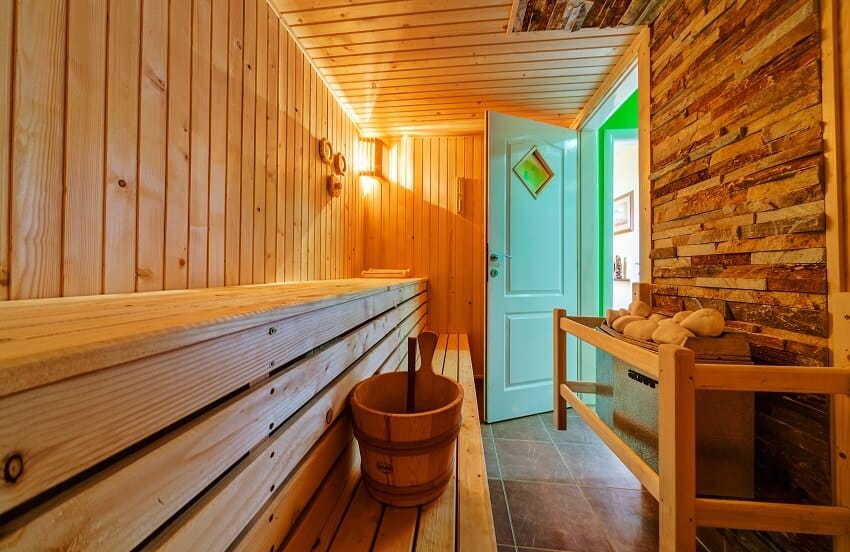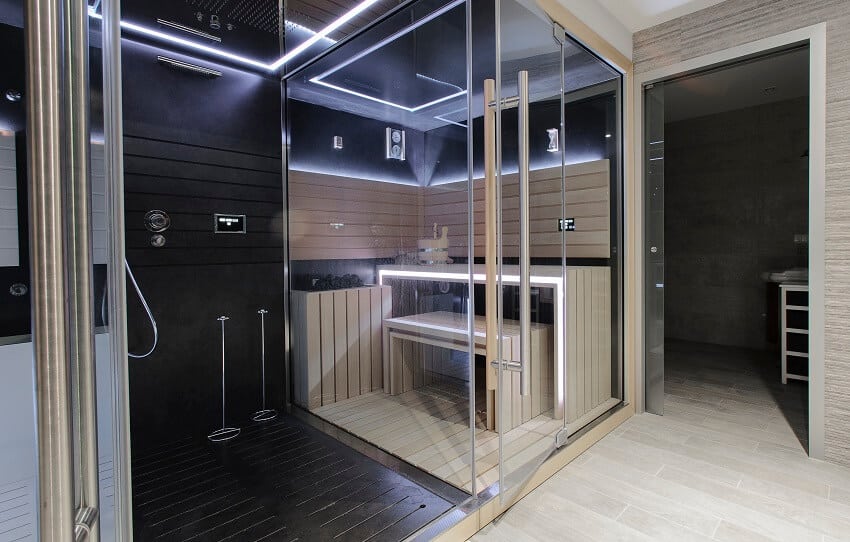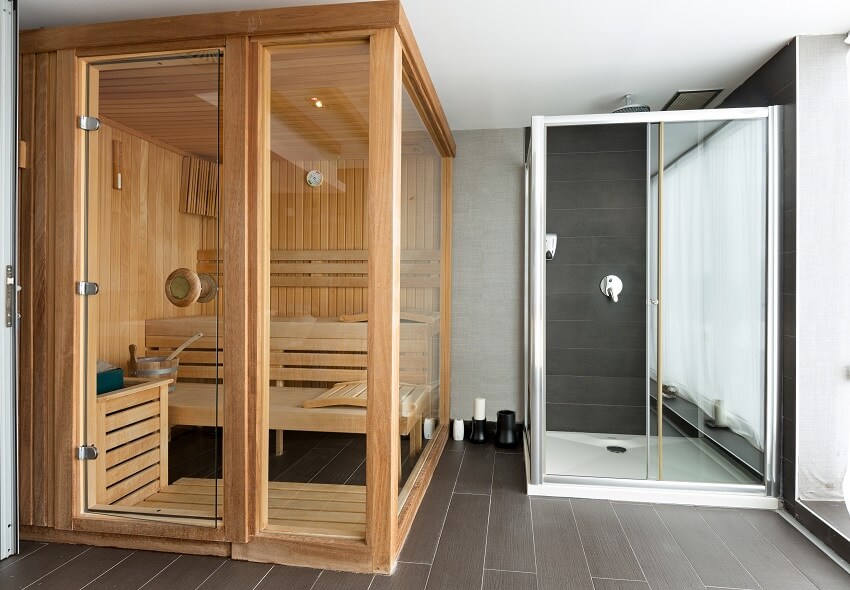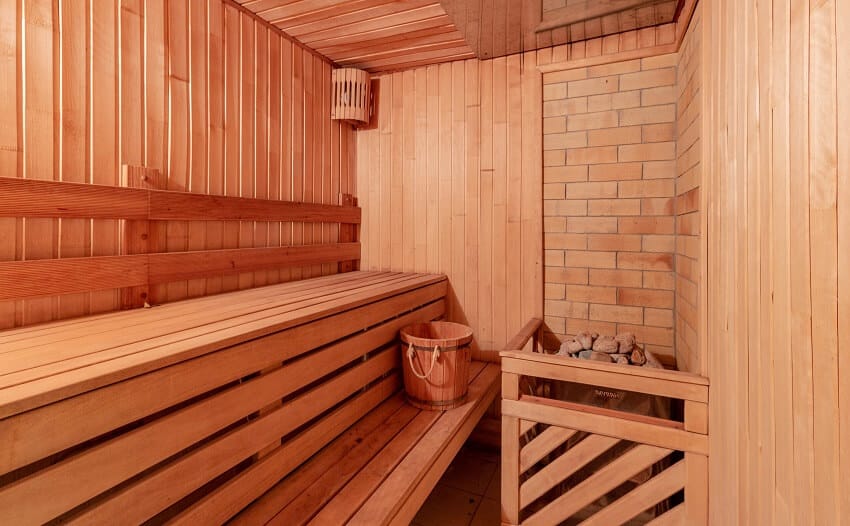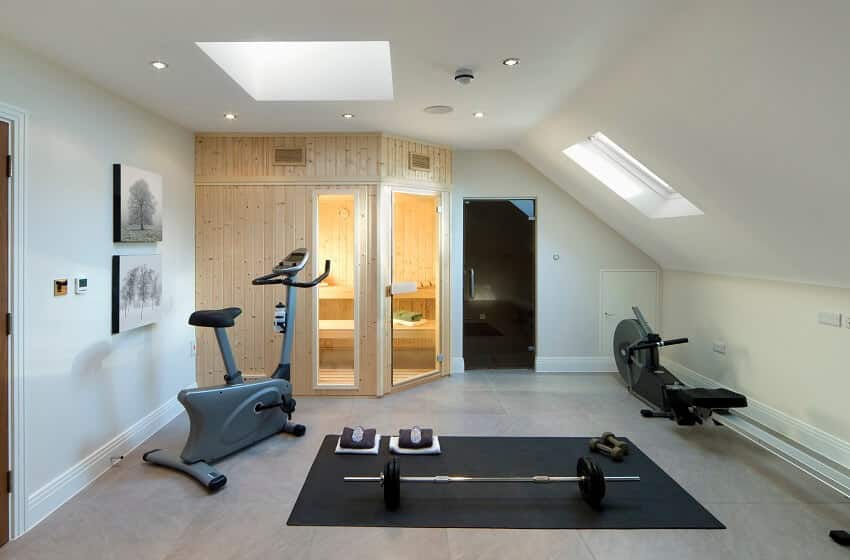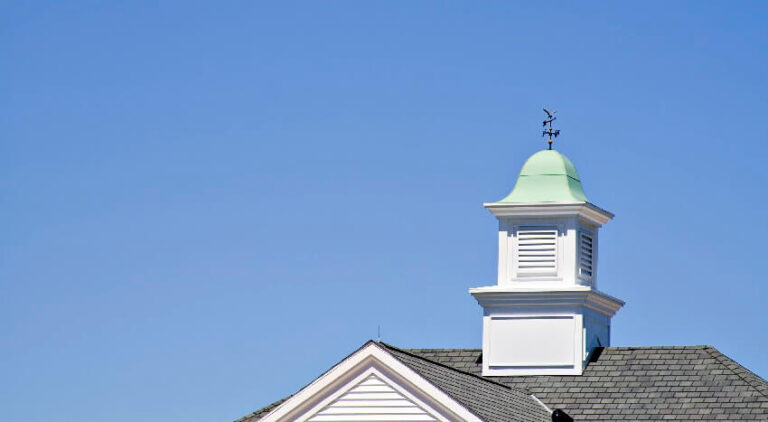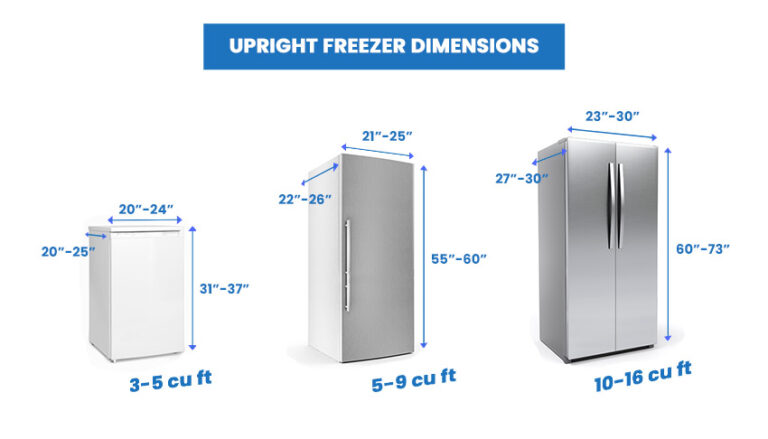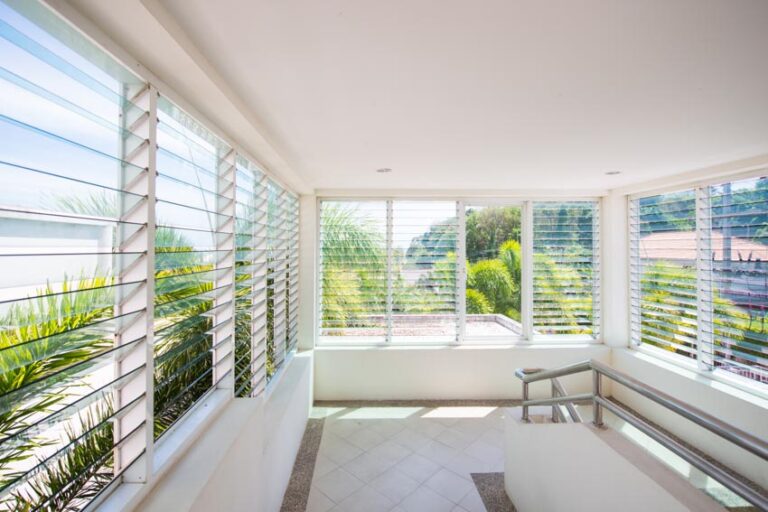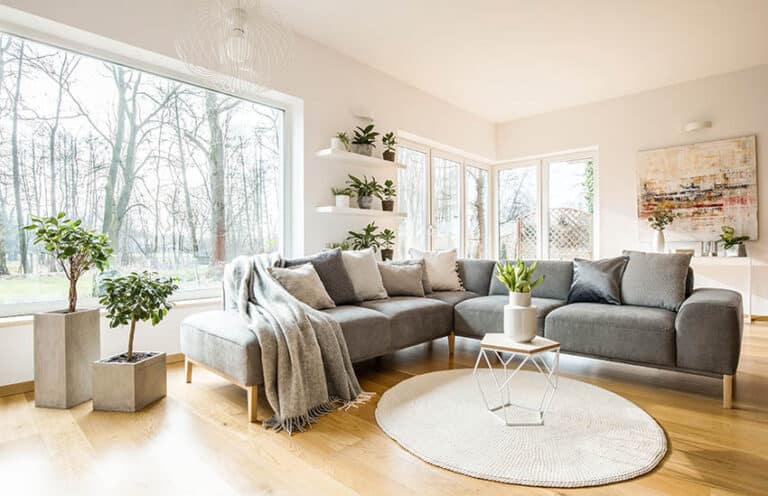Pros and Cons of a Sauna (Benefits & Cost)
Stopping by the sauna can be a relaxing moment or even a great addition to a workout. However, you don’t necessarily have to go to the gym or the spa to take advantage of it – you can have one in your own home! In this guide, we’ll take a look at all of the major pros and cons of a sauna, as well as more information on what it is and what goes into having one of your own.

Before getting into the pros and cons, let’s take a moment to consider exactly what a sauna is. When you’re considering it in your home, what exactly does that entail?
What Is A Sauna?
Generally speaking, a sauna is a small room or enclosed space that, as one of the most recognizable features, is temperature-controlled. Typically, this temperature is kept between about 150 degrees and 195 degree Fahrenheit or between 65 degrees and 90 degrees Celsius.
That being said, not every type is the same as the last. The image of a small, wood-paneled room is a classic look but far from your only option when it comes to this enclosed space.
Not to mention, some variants opt for different features or different types of heat. For instance, other types feature high humidity while others focus more on the heat with a lower level of moisture.
One common theme among these enclosed spaces, however, is that they’re designed as a space to relax in. Even if you want it as part of your workout routine, this room should be a place to take a deep breath and sit for a moment.
Sauna Benefits
Relaxing – The first benefit that comes to mind for many is one we’ve already mentioned: it’s meant to be a relaxing experience.
Reduce stress – It can help you reduce your stress levels physically and provide a relaxing environment. Of course, an in-home type offers this to an extra degree since you can reap the benefits without leaving the comfort of your home!
Joint and muscle recovery – After a workout, this relaxation can also help you relax your muscles. They’re pretty good for your circulation and as you sit in one for a few minutes, you just might start to feel those tight knots start to unravel a bit.
Socialization – Hanging out with friends and family inside this room is an excellent way to socialize. For saunas in public places, it can be a great way to meet new people and create friendships.
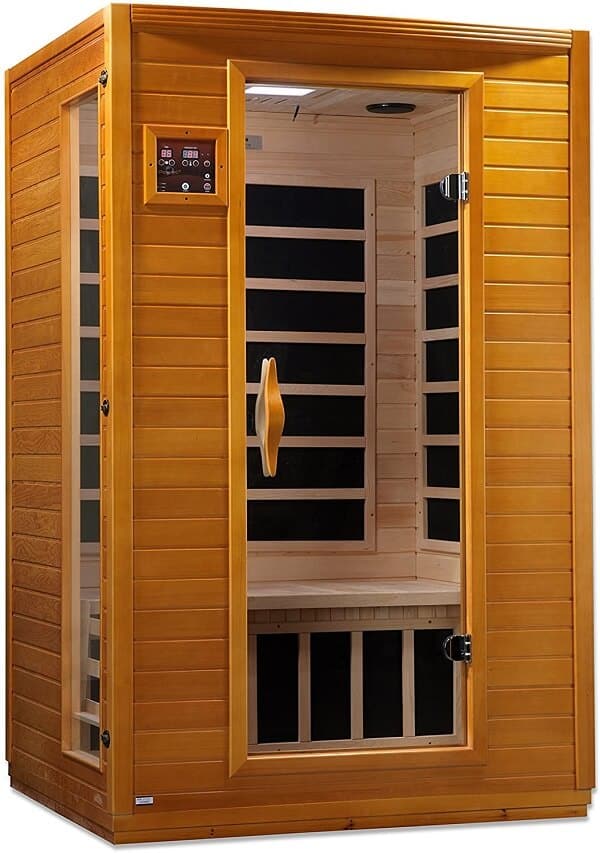
Increase home value – On the more economical side, an in-home variant is also a great way to increase your property value. While this isn’t an immediate benefit, it’ll definitely pay off down the line as an addition if you decide to sell your home.
Rid the body of toxins – These rooms promote the release of toxins from the body through sweating. Sweat is made up primarily of water; however, it also contains minerals such as mercury, copper, zinc, and nickel, which can be removed from the body through sweat glands in the skin.
Burning calories – They do not burn nearly as many calories as exercise. However, the elevated temperatures can increase the heart rate and promote sweating. This, in turn, uses more energy from built-up fat reserves within the body. Some studies have shown a single session can result in burning up to 300 calories.
Sleep better – Many regular users have experienced deeper sleep after nighttime usage. This can promote overall health and well-being.
Enjoyment – For many, a trip to the sauna is the perfect way to end a long, hectic work day. There are both mental and physical benefits to regular usage, which can lead to an elevated sense of relaxation and enjoyment.
Sauna Disadvantages
There are some disadvantages as well. It’s important to understand these cons before jumping right in.
Health concerns – First of all, let’s note some health concerns regarding these rooms. However, you can rest a little easier as long as you make sure you use a sauna as advised and consider your needs. Excessive use can cause the skin to dry out. Later in this article, we’ll look at some more of the specific concerns.
Cost – On the more technical side of things, these rooms come with a higher upfront cost, and you’ll need to consider the space necessary to add this enclosed space to your home. We’ll look closer at the cost of installing one inside a home shortly.
Maintenance – Finally, you’ll want to consider that when it is in your home, it’s your responsibility to maintain it. While this isn’t an unfortunate drawback, it could cause some stress if you don’t want another area in your home to be cleaned.
Home Sauna Cost
There is a lot of variation in the cost of a home sauna. After all, the final cost is affected by the details of the design. Is it indoor or outdoor? Prefab or built from the ground up? How many people do you want to sit inside?
To broadly answer all of these questions in one estimate, you can expect to spend somewhere between $3,000 and $6,000 with an average of around $4,500. This accounts for the cost of materials, labor, and a prefab type.
As for size, the most common choice is 8 feet by 5 feet, seating about four occupants. This will fall within the range just mentioned. However, you can expect to veer closer to the $6,000 range if you want to seat up to seven people.
If you’re looking for something smaller, though, you can save with a room of four feet by four feet for a more personal-sized unit. Read more about sauna dimensions here.
Are Saunas Good For You?
Saunas offer many health benefits, such as stress reduction, as we mentioned when we were talking about some of the benefits. On the other hand, some warnings might give you pause. So, are these home additions good for you?
For one, everyone is different! If you aren’t sure, it’s a great idea to check with your doctor if regular use of this room is a good idea.
In a broader sense, these enclosed spaces are typically safe as long as you use them as intended. For instance, don’t stay inside one longer than you should if you start to feel unwell, if you’ve been drinking or feel unwell before getting started.
To make sure everything goes as smoothly as possible, take the time to cool down slowly once you leave, and make sure to drink a few glasses of water to rehydrate.
How Long To Stay In A Sauna
As we’ve mentioned, a sauna can do a lot of good things, but you have to use it correctly. Otherwise, you risk more disadvantages than advantages and those guidelines are in place for your health. For instance, you shouldn’t overstay your welcome in this space.
If you do, you’ll probably start to feel a bit sick yourself. Since it’s hot and you’re sweating a lot, you don’t want to risk overheating or getting dehydrated. After all, that’s pretty far from a healthy, relaxing experience.
When it comes to how long that you should stay inside, you should limit your time to a maximum of 15 or 20 minutes. If you start to feel unwell, though, make sure to listen to your body and leave if you get uncomfortable rather than waiting out the maximum time limit.
Does A Sauna Burn Calories?
Naturally, sitting in a sauna isn’t provide the same results as a professional athlete’s routine. However, there is a common question about whether this room can burn calories at all.
That being said, you’re likely to burn more calories sitting inside than just sitting outside. There are some estimates that it can help you burn up to twice as many calories as you would doing the same level of activity without the environment of a sauna.
All in all, yes, it is going to burn some extra calories. Yet, it’s still more highly praised in use for workout recovery when it comes to the fitness-related uses of this room.
Benefits Of A Sauna After A Workout
Many people hit the sauna at a gym after their workout. However, what does this do other than just give you a minute to rest and relax after working so hard?
For one, it actually helps with muscle recovery, which can help reduce how sore you start to feel the day after your workout. This comes back to how well saunas do at improving circulation. Not to mention, this will help you feel ready for your next workout sooner if you have a faster recovery from the previous one.
It’s worth mentioning that the stress relief benefits shouldn’t be written off so quickly, either. Stress can have a lot of unpleasant signs that come with it, so it’s a great idea to take some time to relax and step back from time to time.
All in all, taking the time to stop by the sauna after your workout is a great idea that starts to pay off rather quickly. Read about our guide on how to choose home gym colors for more related to this topic.
Do You Use A Sauna Before Or After A Workout?
We’ve already covered that a sauna is potentially a great addition to your workout. Just like any other part of your workout, however, you have to incorporate it correctly to get the most out of it. So, the next time you’re getting ready to plan your workout, where should you work in a trip to the sauna?
While a sauna might feel great to warm you up, it isn’t a warmup in and of itself. You can’t use it to replace your usual routine of stretching and simple exercises before jumping into more intensive activities.
On the other hand, if you take a trip to the sauna after your workout, you can reap the benefits of muscle recovery and reduced soreness in your muscles that we discussed earlier. As a result, you might see more results from putting your time in the sauna at the end of your workout.
Visit our guide hot tub sizes and our comparison to a jacuzzi vs hot tub for more related content.

